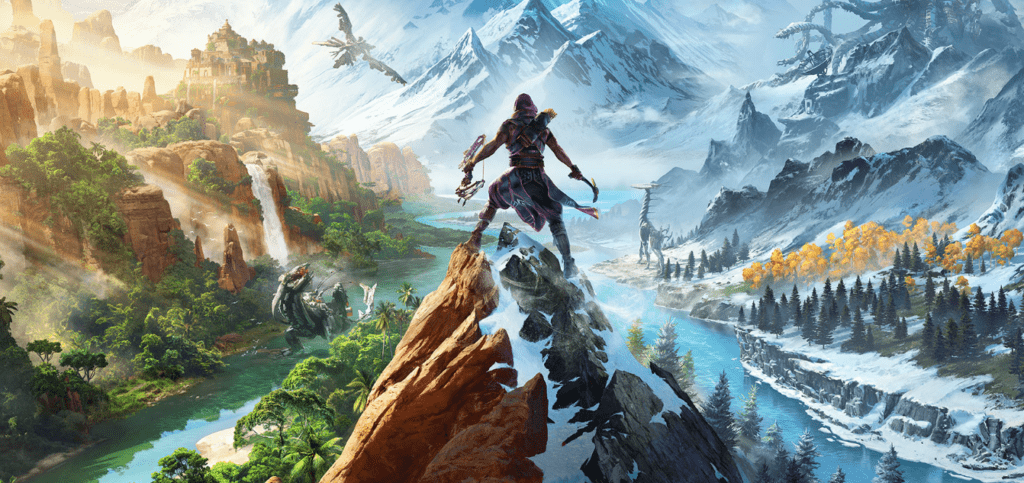Horizon Call of the Mountain and PlayStation VR 2 are inextricably linked. Developed by Guerrilla and Firesprite, the game is a successful VR game thanks to the technology built into PSVR 2, and the PSVR 2 experience is best demonstrated by the game itself. Of course, the barrier to entry is very high: you have to purchase a PS5, buy a headset for $550, and then purchase the game for $60. But those who do will get a game that is both an impressive technical masterpiece and an enjoyable Horizon game in its own right.
Main character Raias: a new hero for a familiar world
Call of the Mountain takes place in the same vibrant environments you're used to exploring as Aloy. However, in this game, the protagonist is Raias, a member of the Shadow Karya who was imprisoned for questionable activities. Raias is released from prison and embarks on a perilous journey to uncover the causes of machine animal behavior in the Horizon worlds.
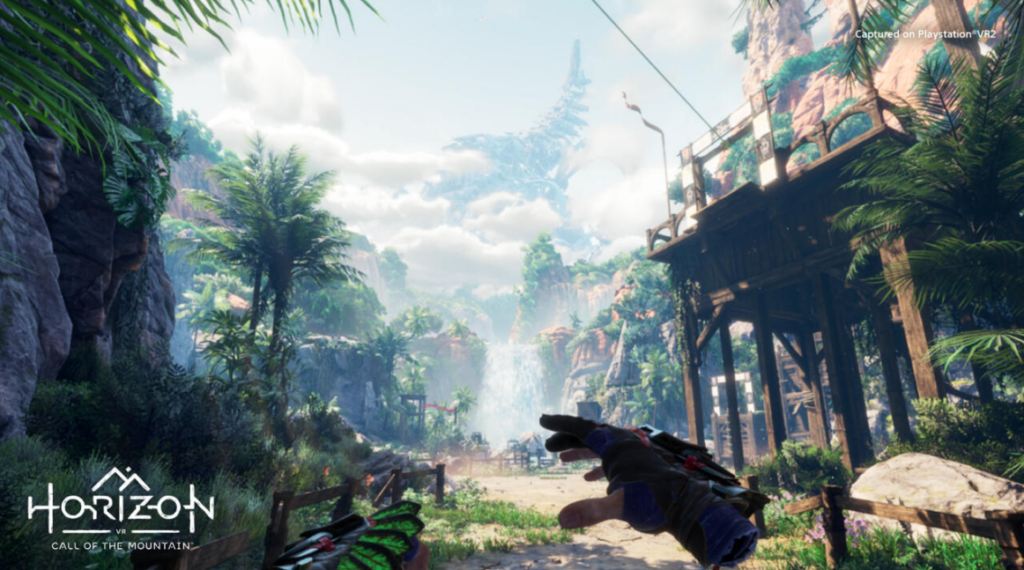
It's a familiar storytelling pace for Horizon, and most of the story is told from Ryas's point of view. Ryas' brother went missing while he was also trying to solve this mystery, so he has a vested interest in helping those around him figure out what's going on, even if the people he works with treat him like an outsider. My interest in Call of the Mountain was primarily to see how she uses the new equipment, so I was taken by surprise when I found myself falling in love with Ryas as a character. The game does a great job of slowly unpacking his story and showing that there could be more to his story than meets the eye.
Raias is a guide to the dangerous world of Horizon
He also serves as a good guide. As you walk around towering structures, whether abandoned buildings or rusting metal hulks of yesteryear, and explore different corners of the world, it occasionally offers context and history to add color to the surrounding landscape. He is not a scientist, so much of what he talks about comes from the point of view of someone who has heard stories of battles or is familiar with other cultures. It's a good balance that means you're constantly being told something, while still allowing Ryas to take over for you. He also questions some of his own preconceptions about what he has always been told or believed, and - as a member of the sinister Shadow Karya - watching his small growth steps throughout the journey is interesting, even if they are not deep.
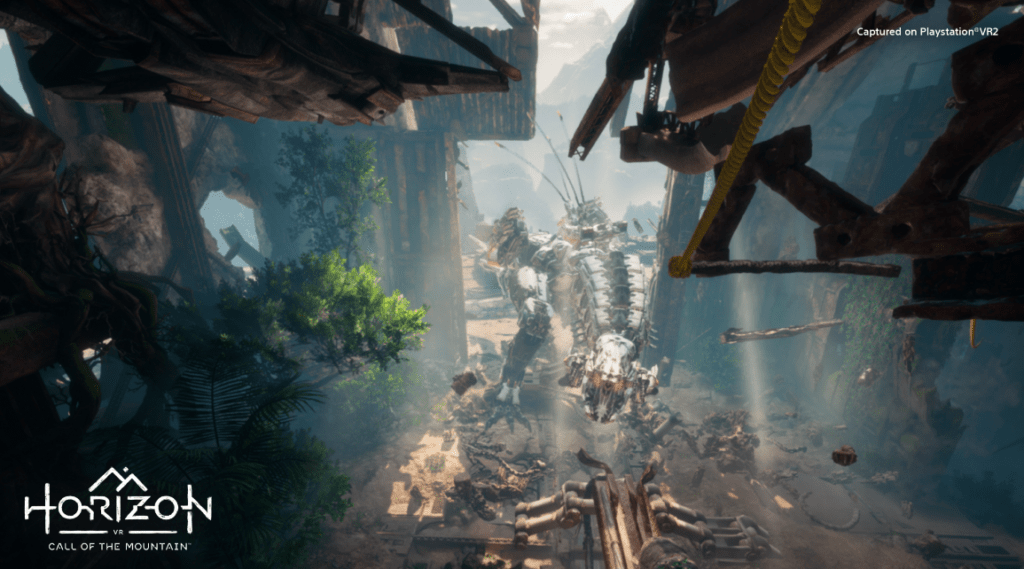
Raias may not be a scholar, but he is definitely capable, which becomes evident when you have to overcome structures and fight enemies. Rayas is a mountaineer and, as the name of his profession suggests, he is a rock climber. This is achieved through the Sense controllers, which - as mentioned in our PSVR 2 review - are very convenient input devices that, in addition to all the buttons, triggers and analog sticks needed to fully participate in the game, include finger tracking. Call of the Mountain matches your real hands with virtual ones and then gives you the ability to grab onto the rising edges (highlighted in white) by holding triggers and physically moving your real hands to move the virtual character from the spot.
Raias - climber and fighter: gameplay and character abilities
VR climbing games are a very familiar mechanic, and there's nothing here that really pushes that mechanic forward. However, it is very well done. Sense controllers make climbing feel tactile and enjoyable, while the PlayStation 5 and PSVR 2 headset display the world around you with enough precision to evoke a sense of tension and danger when moving.
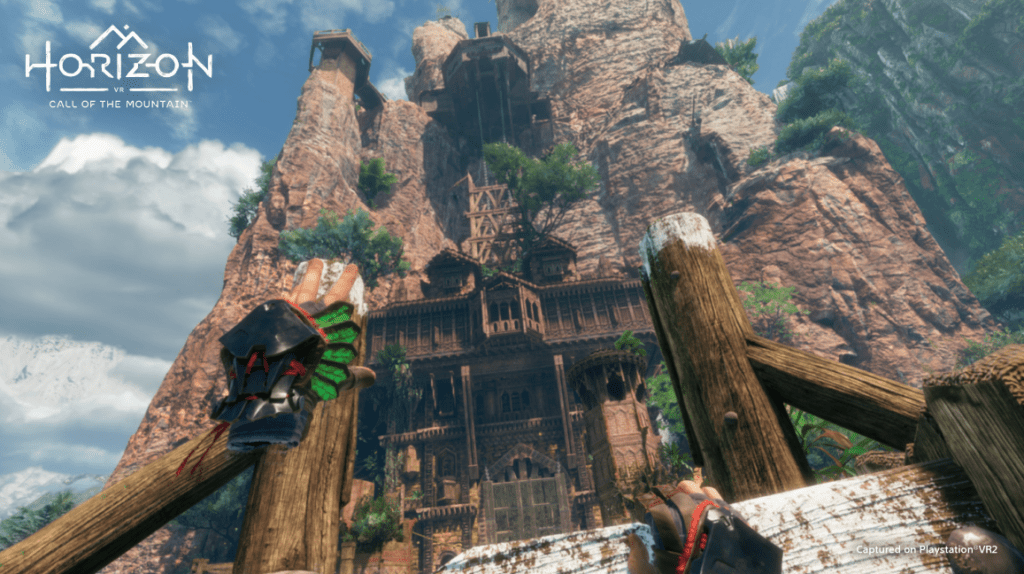
When I climbed rocks, jumped over dangling ropes and jumped over large chasms, I was careful where I was looking, because sometimes I would get dizzy when I looked down. In cases where my virtual hands couldn't properly grab onto a handrail or ledge, I was always overcome by a feeling of horror, even if it was very short-lived, since the game is quite lenient on correcting or using another hand for panic recovery. This sense of danger was especially strong in situations where I had to take a running jump off an edge or use a tool to jump over an abyss - my advice: don't look down.
In general, the feeling of being connected to the world through the Sense controller and the PSVR 2 headset continued throughout other interactions. In Call of the Mountain, I chose to move my arms up and down to mimic walking, which sounds silly and looks silly, but feels like a cross between instant teleportation and direct character control. The latter option is available as an option, but I found it literally nauseating. There are plenty of other options to customize the character's movement and rotation, so you might be able to find the one that works best for you.
Combat in Call of the Mountain: Evasion Dance and Bow and Arrow Use
Combat changes settings and becomes more on-rail when the player can move along a pre-determined path on the battlefield. Usually it's just a big circle around the arena, and you either dodge the attacks of the nimble Watchers, trying to shoot arrows in their eyes, or desperately try to get out of the way of the enraged Thunderjaw. Horizon's collision design, which is built around attacking weak spots to strip metal beasts of their armor and mechanisms that allow them to deliver fatal blows, works great in Call of the Mountain. Most fights are a dance of dodging fireballs, gunshots, tail sweeps, and claw swipes, using your senses to locate your weakest spots, and unleashing a barrage of arrows to knock them off their feet. Again, the bow and arrow mechanic in a VR game is hardly new or innovative, but it's done very well. There is a certain strategy in choosing the best type of arrows for the enemy you are facing, and in quickly getting them over your shoulder and pulling them out while trying to avoid damage.
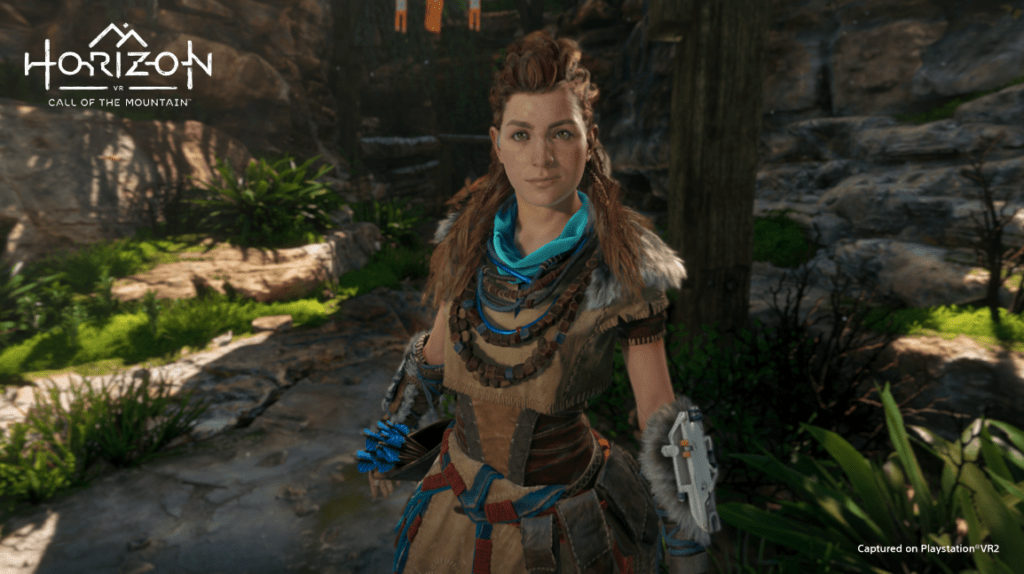
Visual effects: Immerse yourself in the beautiful world of the game
However, the real star of the show are the visuals and the resulting immersive quality of Horizon Call of the Mountain. Again, it's a collaboration between the game and the hardware it's running on - both PS5 and PSVR 2. Call of the Mountain is one of the most beautiful VR games I've ever seen, and being in its world evokes genuine delight—whether I was up close, looking at the details of the tools I created to help me on my journey, or marveling at distant views of verdant trees, rushing waterfalls, and ruined architecture reclaimed by nature. There is something spectacular to be seen at every turn and climb, whether it be the world or the creatures that inhabit it. And it's even more impressive when large sets come into play, so it's easy to get carried away just seeing the sights.
Virtual tourism in Call of the Mountain: transporting players to a familiar world
As a result, Call of the Mountain is the go-to for another kind of VR game that exists in abundance: the virtual travel experience. Again, this is nothing new, but Call of the Mountain does it very well, taking players to the world they know, but allowing them to experience it with an unprecedented level of intimacy.
Conclusion: no revolutionary features, but a high quality game
The constant refrain of "familiar done well" is a defining quality of Call of the Mountain. There's nothing revolutionary about the game that moves VR games forward, and it doesn't do anything unexpected, so in the end it's exactly what it looks like: a well-made Horizon VR game that has good climbing and shooting features, as well as beautiful surroundings. As a showcase of what can be done with PSVR 2, it does its job more than well.
Recommended: Death in the Water 2 - An exciting review of the game!

